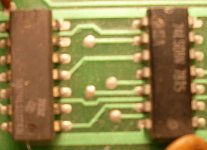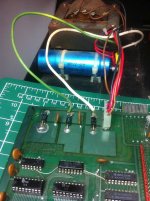I think this is good news. It appears a problem was induced on the +5V by the soldering of the socket. Now with that resolved, and a good counter, you appear to have good Horizontal Drive which will drive the switching high voltage supply for the CRT. However you should have a screen with at least garbage characters.
Do a quick check on the +5V power pins, and then see if you have a good Horizontal drive of 15.625 KHz and a Vertical Drive of 60 Hz. If so, you should be getting video; make sure the brightness is up.




